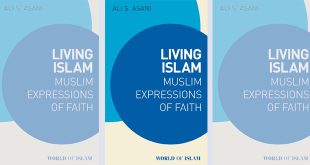There were two types of ijāzas: an ijāza of ijtihād and an ijāza of riwaya. Modern researchers maintain that an ijāza of ijtihād permitted the holder to exercise ijtihād, and that attaining the ijaza was a prerequisite to being a mujtahid.
Following the triumph of the Usulīs over the Akhbarīs in the eighteenth century, the political and social status of the Shi‘i ‘ulama was reinforced A by the Usulī theory.According to the theory, the mujtahids who can exercise ijtihād guide the muqallids or the non-mujtahid believers, who must emulate (taqlīd) them (i.e. the mujtahids). Although the theory has A been well studied and well-known, the direct impact of the Usu līs’ triumph on the Shi‘i community has never been fully examined in the field of social history. The biggest questions are who was a mutjahid in the community, and how one became a mujtahid. In this paper, I will examine the Shi‘i licensing (ijāza) system that prevailed during the nineteenth century, analyze the relations between ijāzas and the status of A mujtahid, and attempt to demonstrate the direct impact of the Usulī doctrine on the Shi‘i community.
There were two types of ijāzas: an ijāza of ijtihād and an ijāza of riwaya. Modern researchers maintain that an ijāza of ijtihād permitted the holder to exercise ijtihād, and that attaining the ijaza was a prerequisite to being a mujtahid. Further, they suppose that an ijāza of riwaya permitted the holder to transmit traditions in teachers’ name, and was the less prestigious than an ijāza of ijtihad. However, my detailed analysis of the texts pertaining to the ijāzas, and their backgrounds demonstrates that the grounds for these assumptions are weak. First, an ijāza of ijtihād did not permit the holder to exercise ijtihād, but rather certified that the holder had achieved the stage of ijtihād. Therefore, it was possible that ‘ulama would exercise ijtihād without having an ijāza of ijtihad when he had the ability. Second, there is no proof that ijazas of ijtihad were systematically issued, or that every mujtahid had acquired an ijāza of ijtihād before becoming a mujtahid. I will propose a new concept of ijtihād and mujtahid that reflects the actual practices of the nineteenth century and attempt to show what the real prerequisites for becoming a mujtahid was in the nineteenth century.
Bibliographic Information
Title: Shi‘i ‘Ulama and Ijāza during the Nineteenth Century
Author: Nobuaki Kondo
Published in: Orient, Vol. 44
Language: English
Length: 22 pages
 Ijtihad Network Being Wise and Faithful Muslim in the Contemporary World
Ijtihad Network Being Wise and Faithful Muslim in the Contemporary World
